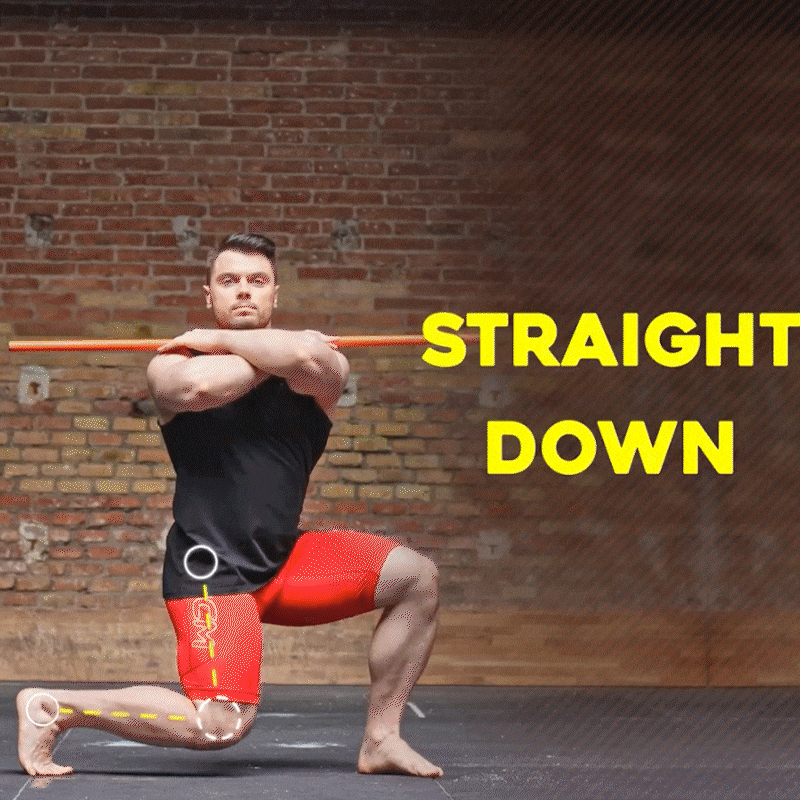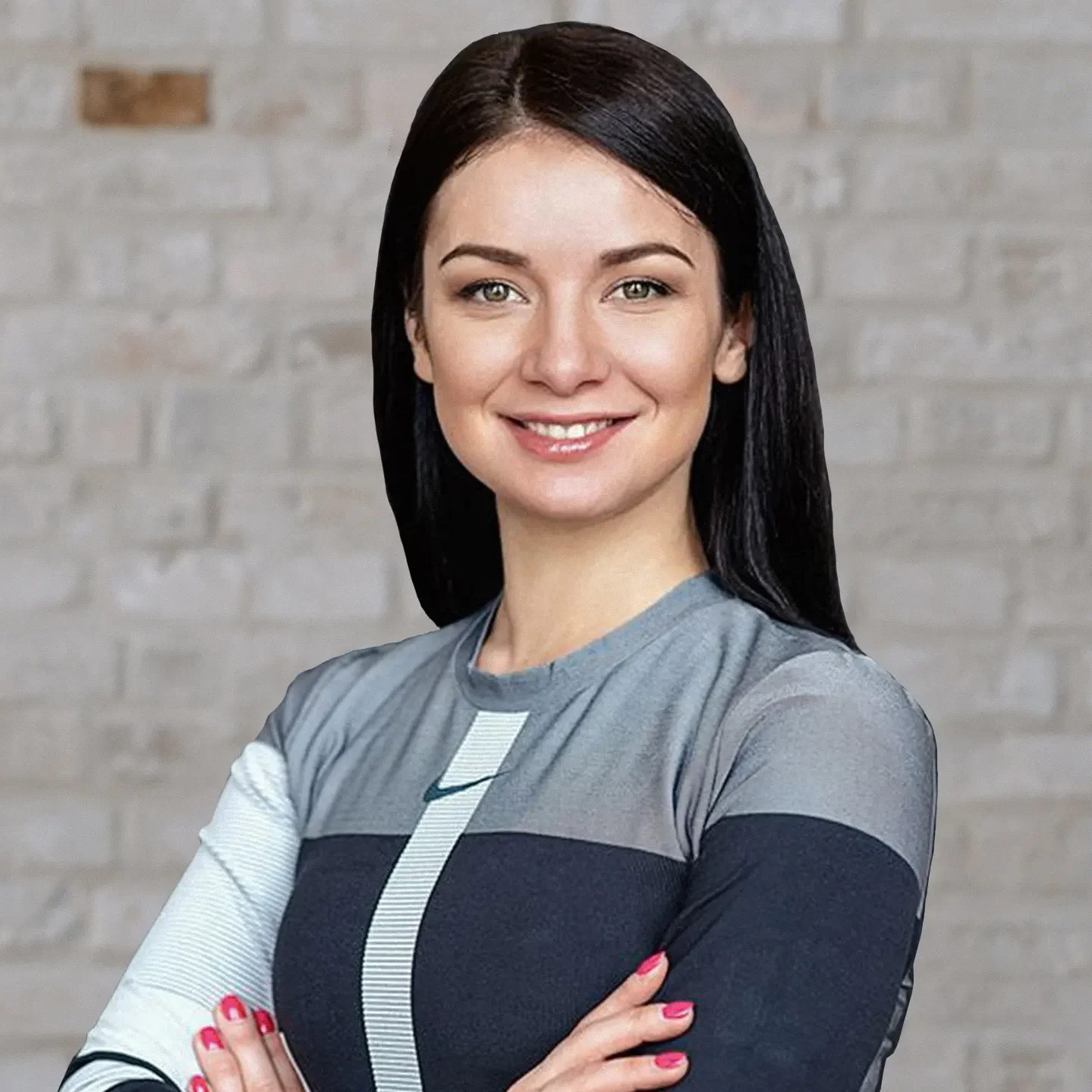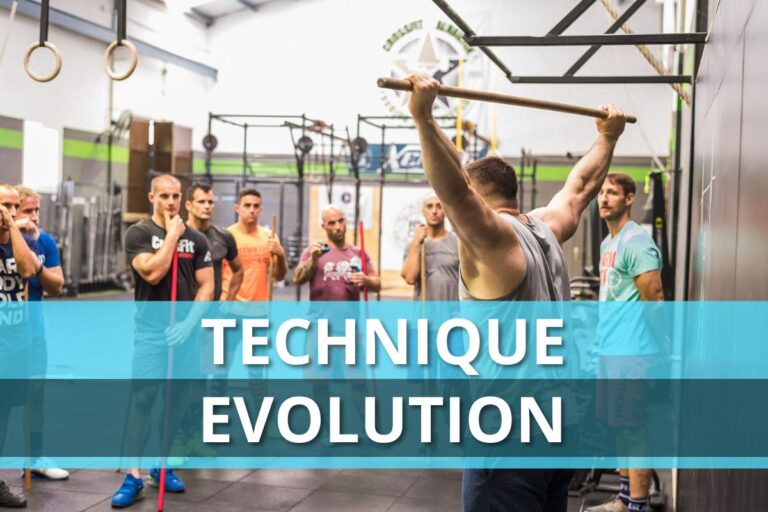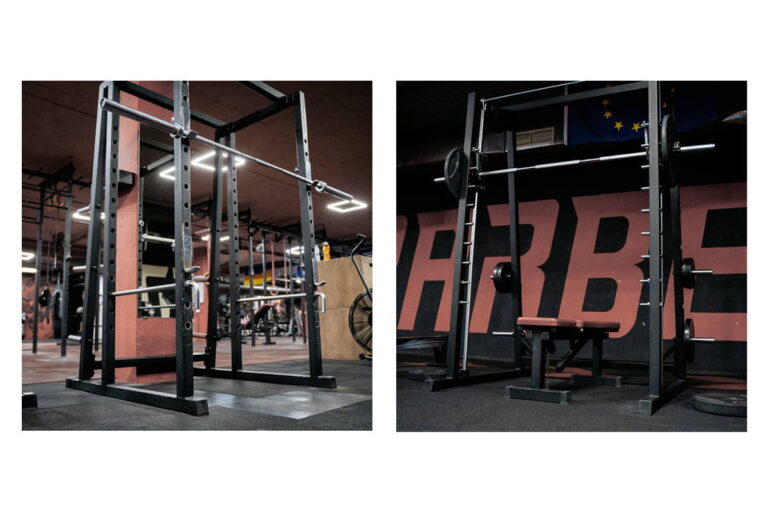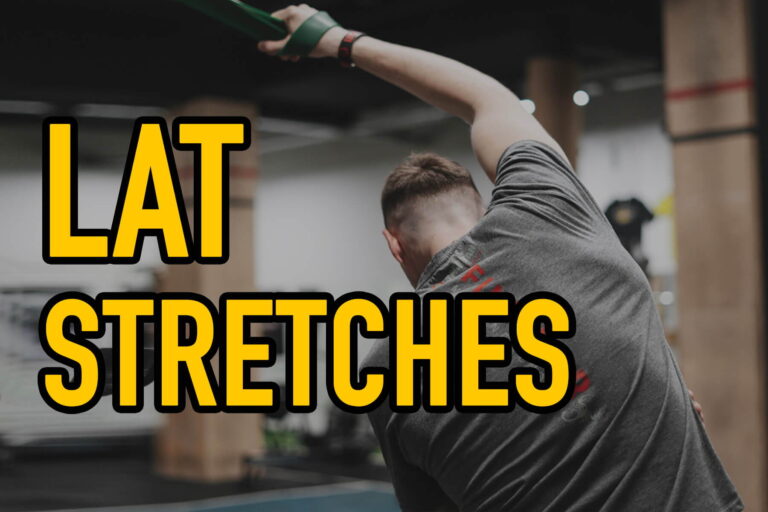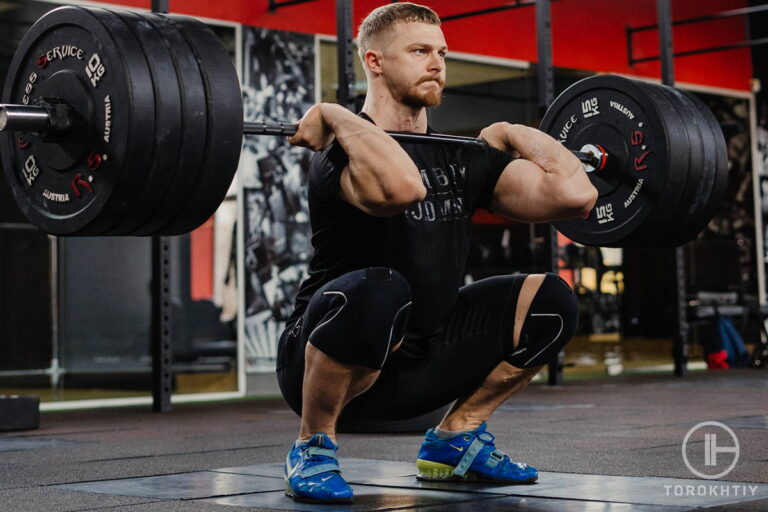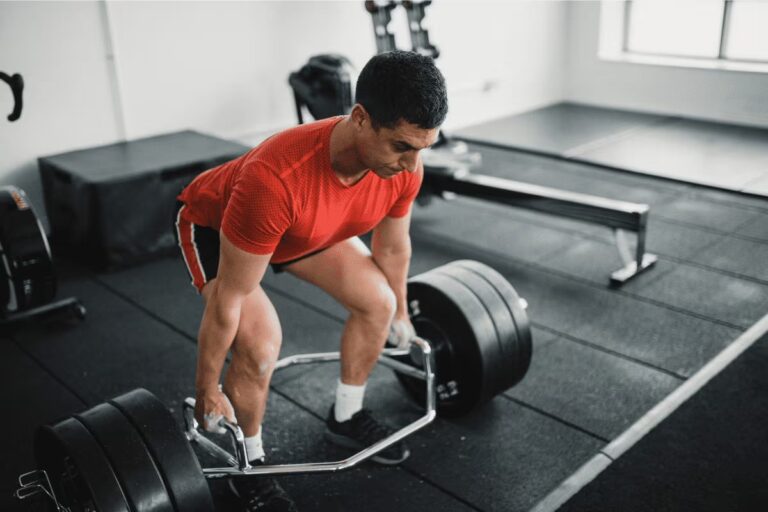Athlete Mobility Workout
Any athlete, regardless of sport or level of competition, should include a Athlete Mobility Workout in their training routine. It consists of exercises that increase flexibility, range of motion, and joint mobility, all of which are necessary for optimal athletic performance and injury prevention.
Athletes who emphasize mobility training can improve their overall movement patterns, maintain good posture, and lower their risk of injuries like sprains, strains, and tears.
Athletes who engage in mobility exercises on a regular basis are better prepared to handle the physical demands of their sport and may experience fewer aches and pains associated with training. In this piece, we’ll discuss the benefits of athlete mobility workouts and how to incorporate them into your training routine.
Athlete mobility workout routines are essential for enhancing athletic performance, preventing injuries, and reducing muscle soreness. Targeting key body parts, such as hips, hamstrings, shoulders, ankles, and lower back, with tailored exercises can improve mobility. Incorporating mobility training into a well-rounded fitness routine is crucial for overall athletic development.
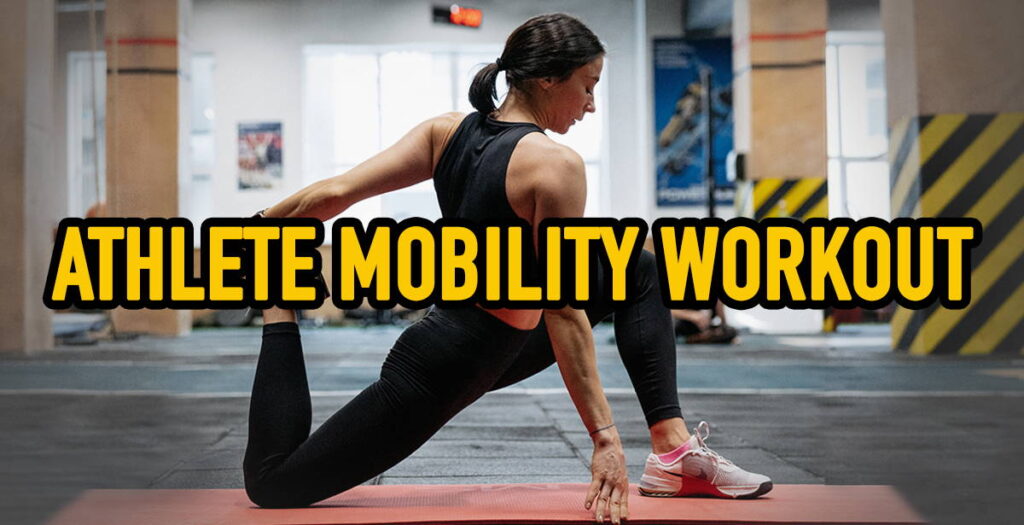
What is Athlete Mobility?
Athlete mobility is the ability of an athlete to move freely and efficiently through a complete range of motion. It includes the flexibility, stability, and joint mobility required for peak athletic success and injury avoidance.
Athlete mobility training typically consists of a variety of exercises intended to increase flexibility, joint mobility, stability, and balance. These exercises may include dynamic stretches, foam rolling, mobility drills, and balance exercises.
Athlete mobility training aims to improve an athlete’s movement patterns, lower the risk of injury, and boost total athletic performance. Athletes can improve their range of motion, reduce muscle soreness, and perform better on the field or court by increasing their mobility.
There are several body parts that are essential to stretch in order to improve athlete mobility. These include:
🔻Full-Body Mobility Program
Mobility For Weightlifting is a 12-week training program for Olympic Weightlifting and other sports, designed for a total body mobility and flexibility development.
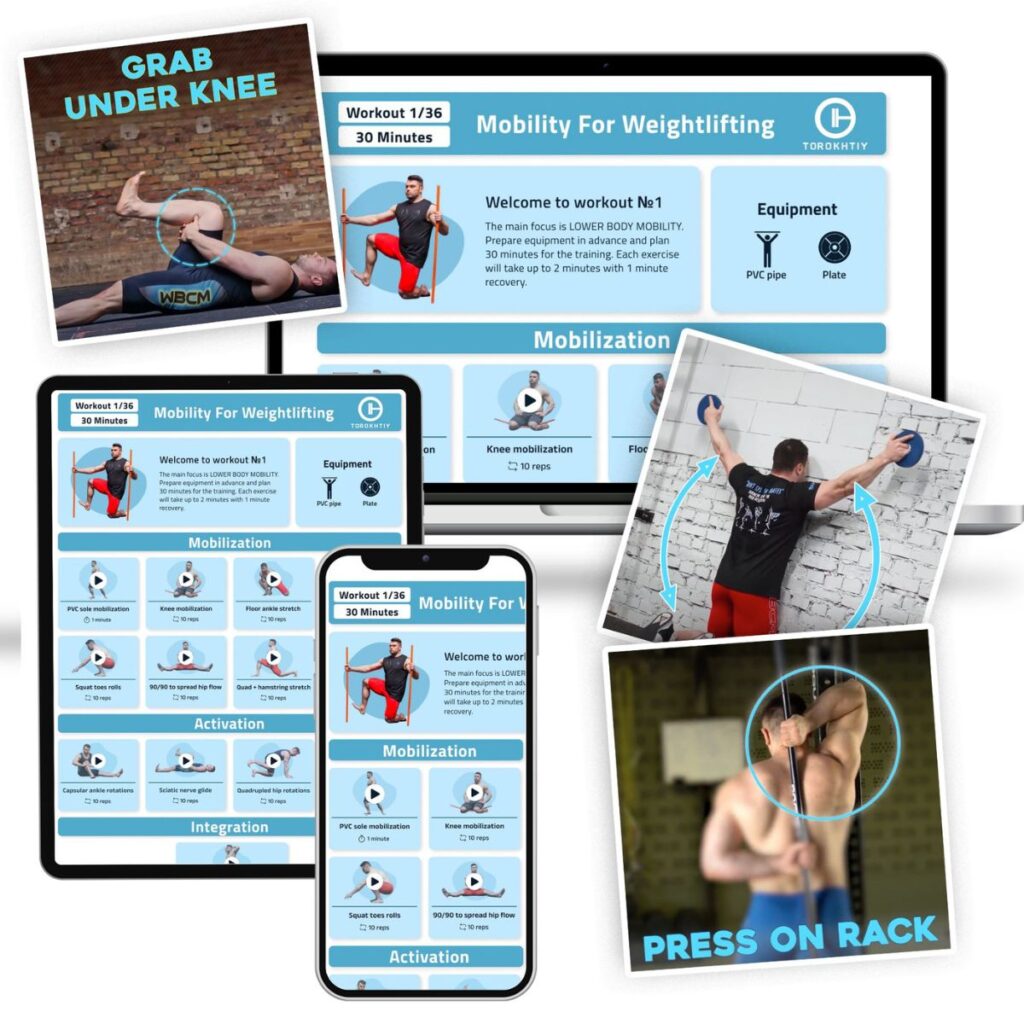
Good For:
1️⃣ Athletes of All Sports and Levels:
Increase your mobility and reach new PRs in lifting — whether you’re into Olympic lifting, Powerlifting, or Functional Fitness.
2️⃣ Those Who are Dealing with Pain:
Pain or other discomfort could be triggered by lack of joint mobility.
3️⃣ Coaches:
Learn new and help your athletes become better.
Hips
Because they are involved in many lower body movements and provide power and stability to the body, the hips are an essential joint to improve athlete mobility. Tight hip muscles can restrict range of motion, causing compensations in other areas of the body and increasing the risk of injury.
Hip extension, flexion, abduction, adduction, and rotation are all controlled by the hip joint and are essential for many activities such as running, jumping, cutting, and kicking. Inadequate hip mobility can contribute to compensations in the knees and lower back, resulting in inefficient movement patterns and an increased risk of injury.
Stretching the hip muscles, which include the hip flexors, glutes, and adductors, can increase mobility and lower the risk of injuries like hip flexor strains, IT band syndrome, and hamstring strains. It can also help to keep good posture and alignment, which can improve overall athletic performance.
Strength training exercises that target the hips, such as squats, lunges, and deadlifts, can help to increase mobility and stability in this joint in addition to stretching. Working with a qualified coach can assist athletes in developing a comprehensive training program that addresses their particular needs and goals, including hip mobility.
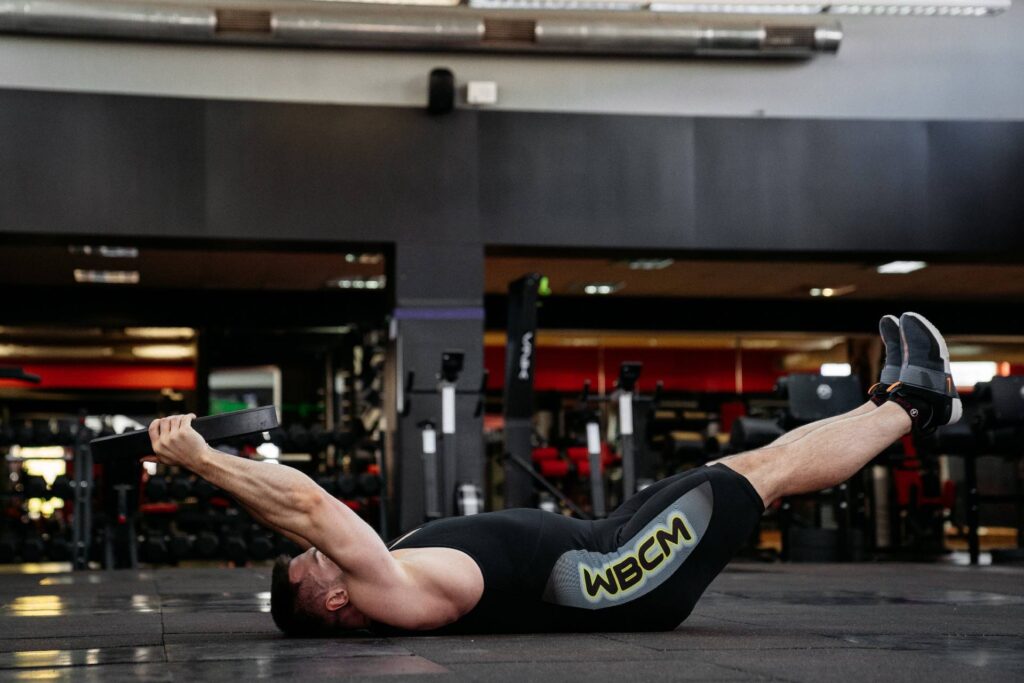
Lower Back
Because it is essential in many athletic movements such as running, jumping, and lifting, the lower back is a crucial part of the body to improve athlete mobility. The lumbar spine controls flexion, extension, rotation, and lateral bending, all of which are necessary for athletic success.
Tightness in the lower back muscles can limit range of motion and cause compensations in other areas of the body, reducing athletic ability and increasing the risk of injury. Poor lower back movement can also contribute to hip and pelvic imbalances, which can lead to additional compensation patterns throughout the body.
Stretching the lower back muscles can improve mobility and reduce the chance of injury. Stretching, when done correctly, can improve flexibility in muscle fibers and connective tissue, allowing for more range of motion in the lumbar spine and reducing strain on the lower back. Cat-cow stretches, seated forward bends, and the Sphinx posture are all common lower back stretches.
Exercises that target the lower back, such as back extensions and bird dogs, can help to improve mobility and stability in this region in addition to stretching. Working with a qualified coach can assist athletes in developing a comprehensive training program that addresses their particular needs and goals, including lower back mobility. However, it is essential to note that people with pre-existing lower back pain or conditions should consult with a healthcare professional before performing any exercises.
Hamstrings
Because they play an essential role in many lower body movements, the hamstrings are an important part of the body to improve athletes’ mobility. These muscles, which are situated on the back of the leg, are in charge of knee flexion and hip extension. Tight hamstrings can restrict range of motion, causing compensatory movements in other parts of the body and increasing the risk of injury.
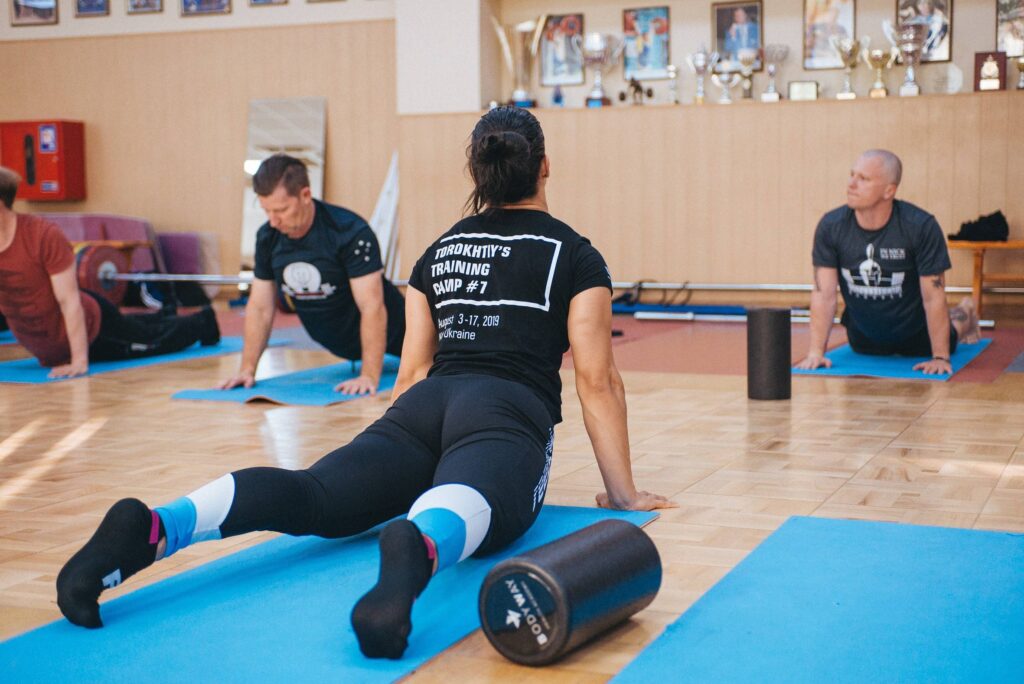
The hamstrings play a significant role in generating force and propelling the body forward in activities such as running, jumping, and cutting. Tight hamstrings can impair the muscles’ ability to contract effectively, resulting in ineffective movement patterns and an increased risk of injuries like hamstring strains.
Hamstring stretches can improve mobility and decrease injury risk. Stretching, when done correctly, can improve flexibility in muscle fibers and connective tissue, allowing for more range of motion in the hip joint and reducing strain on the lower back.
Strength training exercises that target the hamstrings, such as deadlifts, Romanian deadlifts, and glute-ham raises, can help to increase mobility and reduce the risk of injury, in addition to stretching. Working with a qualified coach can assist athletes in developing a comprehensive training program that addresses their unique requirements and objectives, such as hamstring mobility.
Shoulders
Because they are involved in many upper body motions and play a critical role in sports such as throwing, swinging, and pushing, the shoulders are an essential part of the body to improve athlete mobility. The shoulder joint is a complex joint with a broad range of motion, but it is also prone to injury if it lacks mobility or stability.
Tightness in the shoulder muscles can limit range of motion, causing compensations in other areas of the body and raising the risk of injuries like rotator cuff tears, shoulder impingement, and labral tears. Furthermore, poor shoulder mobility can cause compensations in the neck and upper back, affecting general posture and alignment.
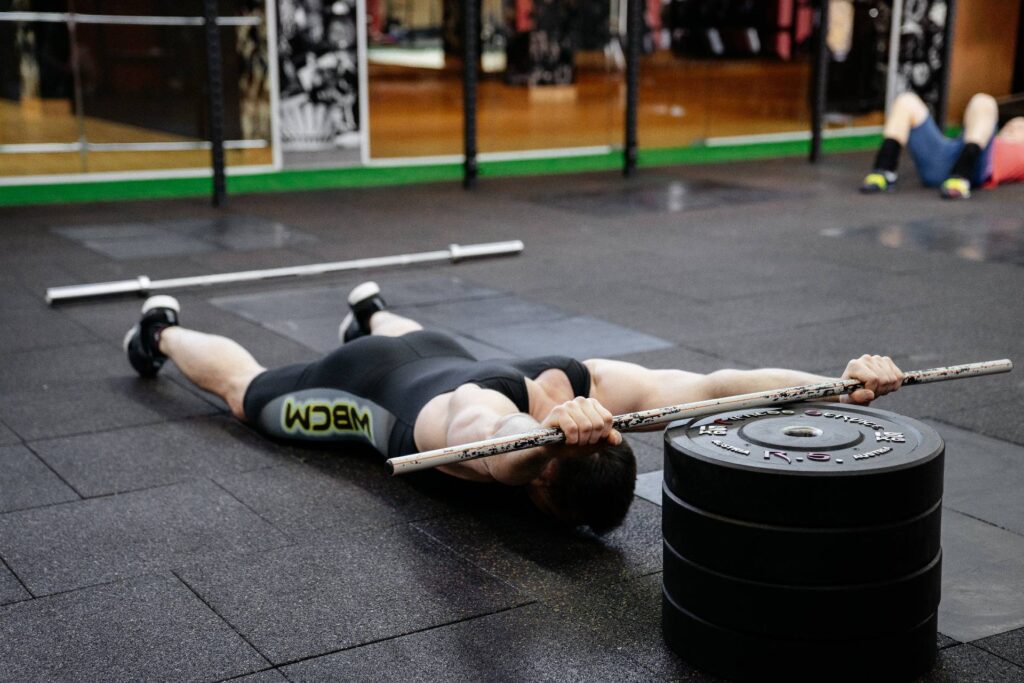
Stretching the chest, shoulders, and upper back can improve shoulder mobility and decrease injury risk. Stretching, when done correctly, can increase muscle fiber and connective tissue flexibility, allowing for a larger range of motion in the shoulder joint and reducing strain on the rotator cuff.
Strength training exercises that target the shoulders, such as overhead presses, lateral raises, and rows, can help to increase mobility and stability in this joint in addition to stretching. Working with a qualified coach can assist athletes in developing a comprehensive training program that addresses their particular needs and goals, including shoulder mobility.
Ankles
Because they play a critical role in many lower body movements, such as running, jumping, cutting, and changing directions, the ankles are an essential part of the body to improve athlete mobility. The ankle joint is a complex joint that provides for dorsiflexion, plantarflexion, inversion, and eversion, which are all important for athletic performance.
Tight ankle muscles can restrict range of motion, causing compensations in other areas of the body and increasing the risk of injuries like ankle sprains, shin splints, and plantar fasciitis. Furthermore, poor ankle mobility can cause compensations in the knees and hips, affecting general movement patterns and performance.
Stretching the calf muscles, including the gastrocnemius and soleus, can improve ankle mobility and reduce the chance of injury. Stretching, when done correctly, can improve flexibility in muscle fibers and connective tissue, allowing for more range of motion in the ankle joint and reducing strain on the lower leg.
Strength training exercises that target the ankles, such as calf raises and ankle dorsiflexion exercises, can help to increase mobility and stability in this joint in addition to stretching. Working with a qualified coach or trainer can assist athletes in developing a comprehensive training program that addresses their particular needs and goals, including ankle mobility.
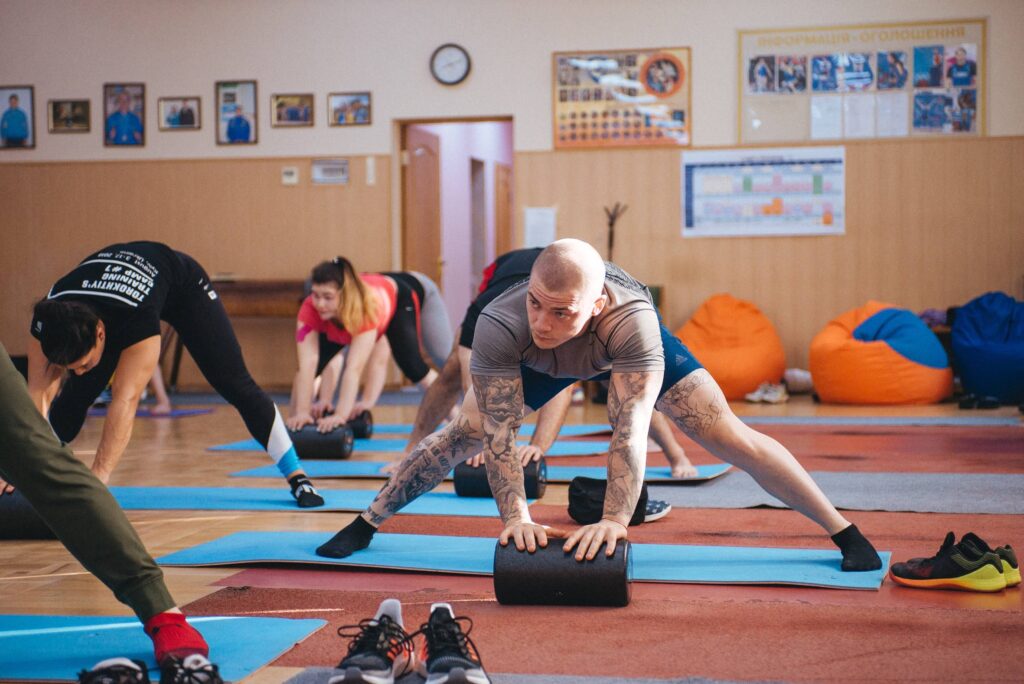
The Benefits of Athlete Mobility
Improved Athletic Performance
When athletes have better mobility, they can move more efficiently and effectively, which can contribute to improved performance in their sport. A basketball player with better hip mobility, for example, may be able to lower their defensive stance and move laterally more quickly, making it more difficult for their opponent to get past them.
Reduced Risk of Injury
Increased mobility can lower the chance of injuries like muscular strains, joint sprains, and overuse injuries. Athletes who improve their range of motion and movement quality are less likely to compensate with other areas of their body, which can lead to injuries over time.
Better Posture
Improving mobility can assist athletes in achieving better posture, which can contribute to improved movement patterns and a lower chance of injury. For example, a runner with better hip and spine mobility may be able to run with a more upright posture, reducing the risk of back pain or other injuries.
Increased Range of Motion
Greater mobility enables athletes to move their joints through a wider range of motion, which can improve flexibility and overall movement quality. This can result in enhancements to particular skills, such as a gymnast’s ability to perform a full split or a soccer player’s ability to kick the ball higher.
Enhanced Recovery
Athletes can recover quicker from training and competition by performing mobility exercises that reduce soreness and fatigue. Athletes may experience less soreness and recover more quickly between workouts or contests if blood flow to the muscles is improved and muscle tension is reduced.
Improved Overall Health
Mobility exercises can help to reduce stiffness and tightness throughout the body, resulting in improved general health and well-being. Athletes may profit from better sleep, reduced stress, and other benefits by reducing muscle tension and improving circulation.
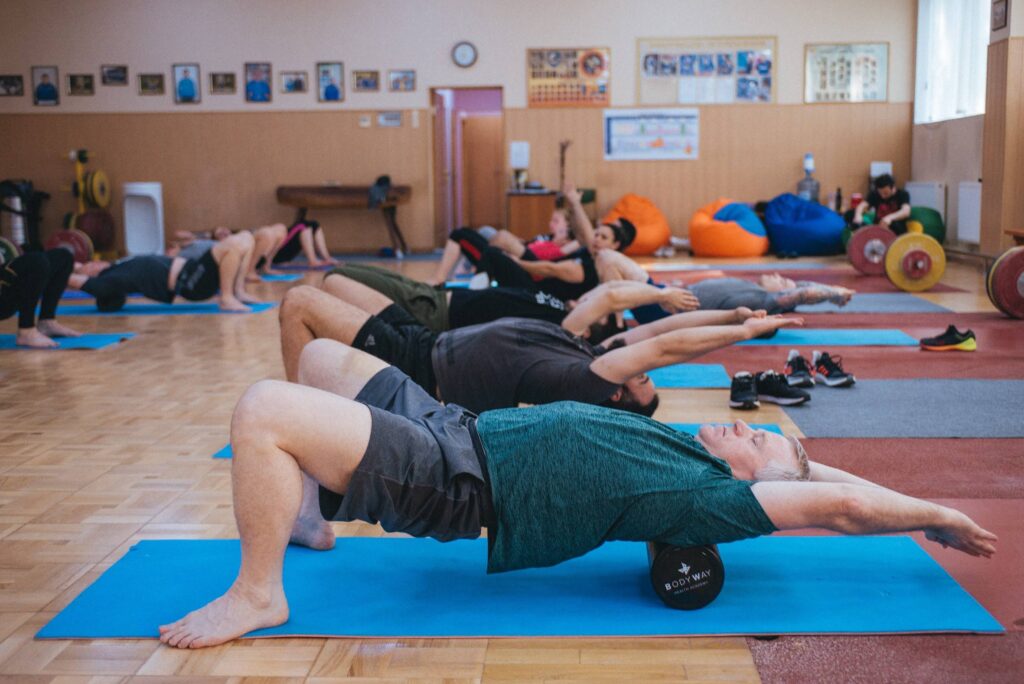
Improved Body Awareness
By concentrating on mobility, athletes can gain a better understanding of their bodies and movement patterns, allowing them to make more informed choices about training and competition. An athlete with better mobility, for example, may be able to spot movement patterns that are causing pain or discomfort and make adjustments to avoid injury.
The Best Athlete Mobility Exercises
Cat-Cow Stretch
The Cat-Cow stretch is a yoga-inspired exercise that serves to mobilize the spine and stretch the muscles in the lower back. It’s a gentle exercise that can be done as part of a warm-up or cool-down routine or as a standalone stretch.
Start on your hands and knees, with your palms directly under your shoulders and your knees directly under your hips, to perform the Cat-Cow stretch. Your spine should be in a neutral posture, with your head parallel to it.
As you inhale, arch your back and raise your head and tailbone toward the ceiling, allowing your belly to descend toward the ground. This is referred to as the Cow Pose. As you exhale, round your spine and tuck your chin to your chest, drawing your belly button toward your spine. This is referred to as the Cat Pose.
Repeat the Cat-Cow stretch for several breaths, alternating between the two positions smoothly and gently. Focus on opening your ribcage and lengthening your back as you inhale. Focus on engaging your abdominals and rounding your back as you exhale.
The Cat-Cow exercise can help to enhance spinal mobility and flexibility, lower back tension, and posture. It’s also a great method to loosen up the spine before more strenuous exercise or to release tension after a long day of sitting or standing.
Child’s Pose
Child’s pose is a yoga position that stretches and mobilizes the muscles of the lower back, hips, thighs, and ankles. It is a gentle and restorative posture that can be used as a relaxation pose or a gentle stretch in between more strenuous poses.
Begin by kneeling on the floor with your toes touching and your knees hip-width apart to execute Child’s pose. Sit back on your heels and gently walk your hands forward, lowering your torso to the ground. Your brow should rest on the cushion, and your arms should be stretched out in front of you, palms down.
In this position, concentrate on taking slow, deep breaths, allowing your body to relax and release any tension. Depending on your preference, you can maintain this pose for several breaths or several minutes.
A few modifications can be made to the child’s posture to make it more comfortable or accessible. Place a folded blanket or cushion between your thighs and ankles if your knees are sensitive. If your forehead does not contact the ground, place it on a block or cushion.
Sphinx Pose
The Sphinx pose is a yoga pose that serves to strengthen and mobilize the muscles of the lower back and core. It is a gentle backbend that can be used as a warm-up for more advanced backbends or as a stand-alone stretch to enhance spinal mobility.
To execute Sphinx pose, begin by lying on your stomach with your legs extended behind you and your elbows exactly beneath your shoulders. Lift your chest and head off the ground by pressing your forearms and palms into the mat. Your forearms should be on the ground, and your elbows should be exactly beneath your shoulders.
In this position, concentrate on lengthening your spine and opening up your chest. Depending on your preference, you can maintain this pose for several breaths or several minutes.
Sphinx pose can be modified in a few ways to make it more comfortable or accessible. Place a blanket or cushion under your pelvis if your lower back is sensitive. If you want to intensify the stretch, walk your elbows forward slightly.
Pelvic Tilt
The pelvic tilt is a simple exercise that can help strengthen lower back and hip mobility and stability. While lying on your back, slowly tilt your pelvis forward and rearward.
Start by lying on your back with your knees bent and your feet flat on the floor to execute the pelvic tilt. Your arms can be positioned by your sides or on your stomach. Begin by relaxing your body and taking a few long breaths.
Next, take a deep breath in and exhale by gently tilting your pelvis forward and pressing your lower back into the floor. Repeat this movement several times, concentrating on controlling the movement with the muscles of the lower abdomen and lower back.
The pelvic tilt can be adjusted in a variety of ways to make it more pleasant or difficult. If your lower back is sensitive, you can execute the exercise with a small pillow or cushion under your head. If you want to make the exercise more difficult, stand with your legs straight or raise one leg off the ground and hold it in the air.
Hip Bridge
The hip bridge is a basic, but effective exercise that works the glutes, hamstrings, and lower back. It is a wonderful method to improve hip mobility and strengthen lower-body muscles.
To execute the hip bridge, begin by lying on your back with your knees bent and your feet flat on the ground. Your arms can be positioned by your sides or on your stomach. Begin by relaxing your body and taking a few long breaths.
Exhale, then raise your hips off the ground while squeezing your glutes and pressing your heels into the ground. Hold the position for a few seconds before inhaling and lowering your hips to the ground. Repeat this exercise several times, concentrating on lifting your hips with your glutes and hamstrings.
The hip bridge can be altered in a variety of ways to make it more comfy or difficult. You can make the exercise more difficult by lifting one leg off the ground or by placing a weight on your pelvis. If your lower back is sensitive, you can execute the exercise with a small pillow or cushion under your head.
🔻Test Your Mobility Before Starting the Program
Mobility is crucial because it directly impacts your performance, technique, and overall safety.
Complete 3 simple tests to evaluate your current mobility.
Our Program Includes:
- 📺 80 Videos for every exercise:
Unique movements, supported by detailed graphics and voice-over. - 📆 36 Workouts x 30 minutes each:
12-weeks plan can be used as standalone program or as a pre-/post-workout training. - 📊 Tests to track you progress:
Make simple tests in the beginning and after finish to elevate your result. - 🏋️♂️ Made by Olympian:
Designed by a Champion, under the guidance of PhD in sport science and physiotherapist. - 💲One-time payment:
No monthly or any other recurring payments. One payment, life-time usage.
FAQ
How Do I Increase My Athletic Mobility?
Stretching and strength training exercises are suggested to improve athletic mobility. Stretching exercises help improve flexibility in key areas such as the hips, hamstrings, shoulders, ankles, and lower back, whereas strength training exercises help develop stability and strength in the muscles and joints. Dynamic stretching and foam rolling should also be included in the mobility regimen. Consistency is important, so aim to integrate stretching and strength training exercises into your routine at least 2-3 times per week, gradually increasing the intensity and difficulty of the exercises as you go.
How Long Does It Take To Get Mobility?
The time it takes to improve mobility varies based on the individual’s starting point and specific objectives. In general, consistent and targeted mobility training can produce visible results in a matter of weeks or months. It is essential to note, however, that achieving and keeping optimal mobility is an ongoing process that necessitates regular effort and attention. To prevent injury, it’s also critical to listen to your body and move at a safe and sustainable pace. Age, prior injuries, and other health conditions may also influence the rate and extent of mobility improvement.
Should You Train Mobility Everyday?
It is not advised to exercise mobility every day because it can cause muscle soreness and fatigue, and overtraining can lead to injury and decreased performance. Instead, allow your body time to rest and recover between mobility exercises. In general, 2-3 mobility training sessions per week are suggested, with at least one day of rest in between. However, some light stretching or mobility drills on rest days can be beneficial for maintaining mobility and preventing stiffness. The frequency and intensity of mobility training should be tailored to the individual’s requirements and objectives, and progress gradually over time.
Conclusion
Athlete mobility is essential for general health and performance. It alludes to an athlete’s ability to move their joints through their entire range of motion. Improving athlete mobility can result in a variety of advantages, including better efficiency, injury prevention, and decreased muscle soreness. Stretching, mobility drills, and yoga poses are important for targeting key areas of the body, such as the hips, hamstrings, shoulders, ankles, and lower back. However, it is critical to avoid overtraining and to allow the body to rest and recuperate between mobility training sessions. Athletes can improve their mobility, improve their performance, and reduce their risk of injury by incorporating mobility training into a well-rounded fitness routine and tailoring it to individual requirements and objectives.
Let us know if you agree with us on this topic or share your thoughts on the importance of athlete mobility by using the comments section below!
Also read:
- Neck Mobility Exercises
- Thoracic Mobility Exercises
- Scapular Mobility Exercises
- Squat Stretches
- Mobility Routine for Lifters
- Shoulder Mobility Exercises
- Lat Stretches
- 6 Week Squat Program
- 8 Week Squat Progression
References:
- Trends in Sedentary Behavior Among the US Population, 2001-2016 // JAMA Network: https://jamanetwork.com/journals/jama/fullarticle/2731178
- Prediction and injury risk based on movement patterns and flexibility in a 6-month prospective study among physically active adults // National Library of Medicine: https://www.ncbi.nlm.nih.gov/pmc/articles/PMC8139277/
- Trends in Nonfatal Falls and Fall-Related Injuries Among Adults Aged ≥65 Years // CDC: https://www.cdc.gov/mmwr/volumes/69/wr/mm6927a5.htm
- Posture and positioning // SAUK: https://sauk.org.uk/coping-with-scoliosis/posture-and-positioning/
- The importance of stretching // Health Harvard Publishing: https://www.health.harvard.edu/staying-healthy/the-importance-of-stretching
Why Trust Us?
With over 20 years in Olympic Weightlifting, our team does its best to provide the audience with ultimate support and meet the needs and requirements of advanced athletes and professional lifters, as well as people who strive to open new opportunities and develop their physical capabilities with us.
By trusting the recommendations of our certified experts in coaching, nutrition, dietology, and sports training programming, as well as scientific consultants, and physiotherapists, we provide you with thorough, well-considered, and scientifically proven content. All the information given in the articles concerning workout programming, separate exercises, and athletic performance, in general, is based on verified data. We ensure that you can rely on our professionals’ pieces of advice and recommendations that can be treated as personalized ones which will benefit you and fully meet your needs.
The product testing process is described in more detail here
Author: Zinaida Bondarenko
Coach, Physiotherapist
Physical rehabilitation experience: 10 years
Zinaida was a member of the national team of Ukraine in rhythmic gymnastics, accumulating 15 years of professional sports experience. She holds certifications in functional training, rehabilitation, kinesiotherapy, specializing in working with athletes across various domains: recovery, rehabilitation, functional and mobility training, General Physical Preparedness (GPP), as well as injury prevention through specific program design. Moreover, she focuses on athlete and coach education to enhance performance and prevent injuries.

